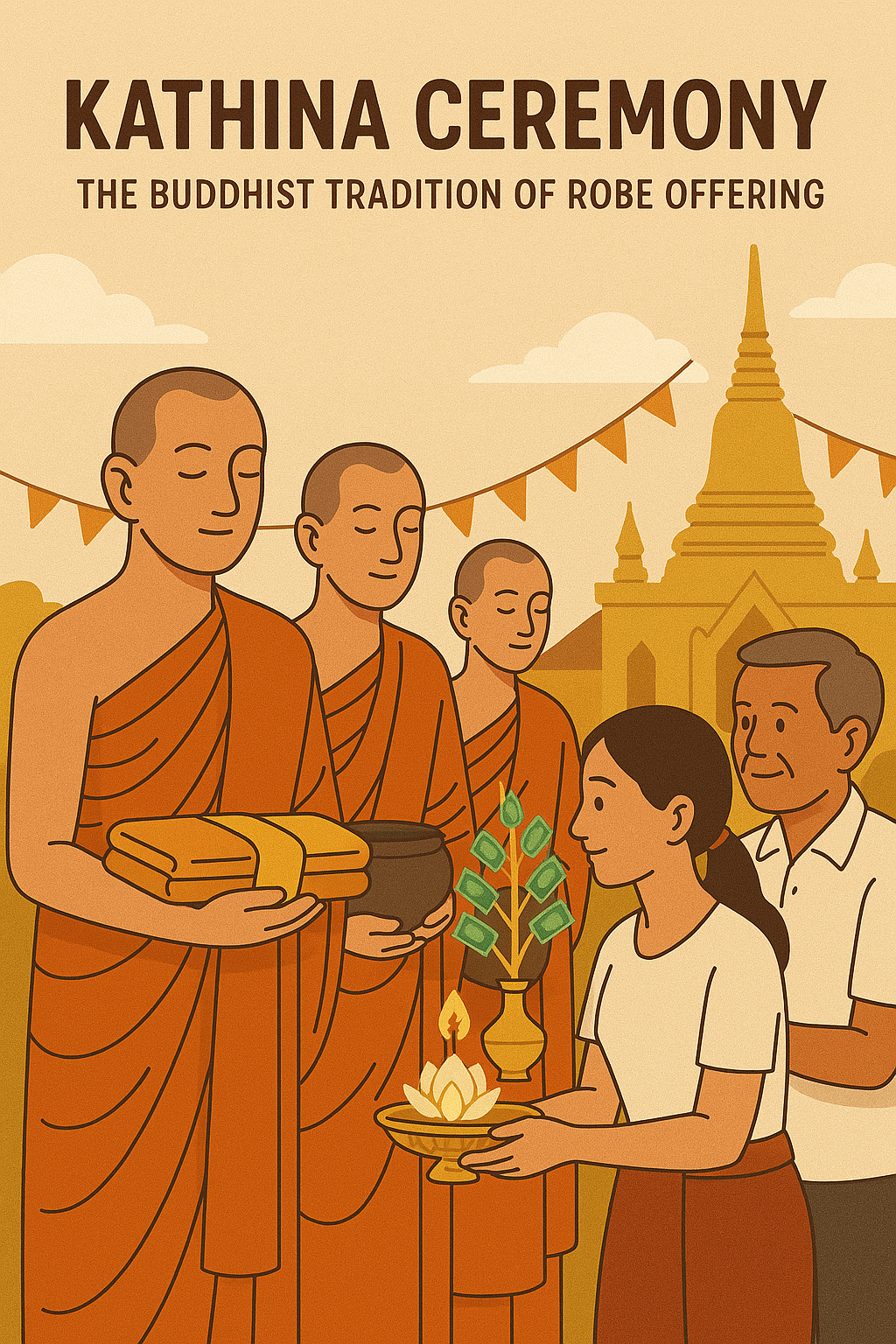Introduction
Cambodia’s cultural calendar is rich with festivals, but two of the most spiritually profound are Meak Bochea and Visak Bochea. These Buddhist holidays, steeped in ancient traditions, offer Cambodians a time to reflect, purify, and recommit to the teachings of the Buddha. Observed with candlelight processions, temple ceremonies, and acts of generosity, they are deeply rooted in Cambodia’s Theravāda Buddhist heritage.
1. Meak Bochea: Honoring Buddha’s Final Sermon

Meak Bochea, observed on the full moon of the third lunar month (usually in February), marks the occasion when 1,250 enlightened monks spontaneously gathered to hear the Buddha deliver his final sermon—a call to uphold moral purity, avoid wrongdoing, and cultivate the mind.
- Spiritual Theme: Renunciation and preparation for the Buddha’s passing.
- Key Teachings: The “Ovada Patimokkha” or fundamental code of Buddhist conduct.
- Modern Observance: Devotees visit pagodas to offer food to monks, chant sutras, and meditate.
2. Visak Bochea: Celebrating Three Sacred Events
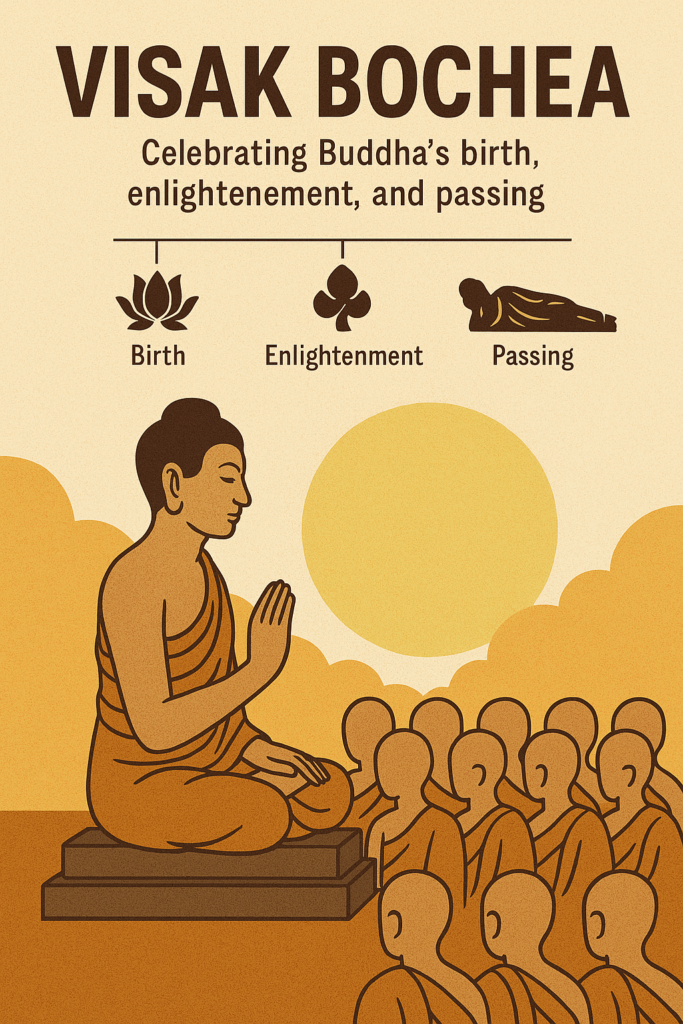
Visak Bochea, celebrated on the full moon of the sixth lunar month (April or May), is the most sacred Buddhist day, marking three major life events of the Buddha:
- His birth,
- His enlightenment, and
- His passing into Nirvana.
This “Triple Blessed Day” is a reminder of the impermanence of life and the path toward liberation.
- Temple rituals include: Offerings, meditation, Dharma talks, and candlelight processions.
- Government recognition: A public holiday in Cambodia, with nationwide observances.
3. How Cambodians Celebrate These Holidays
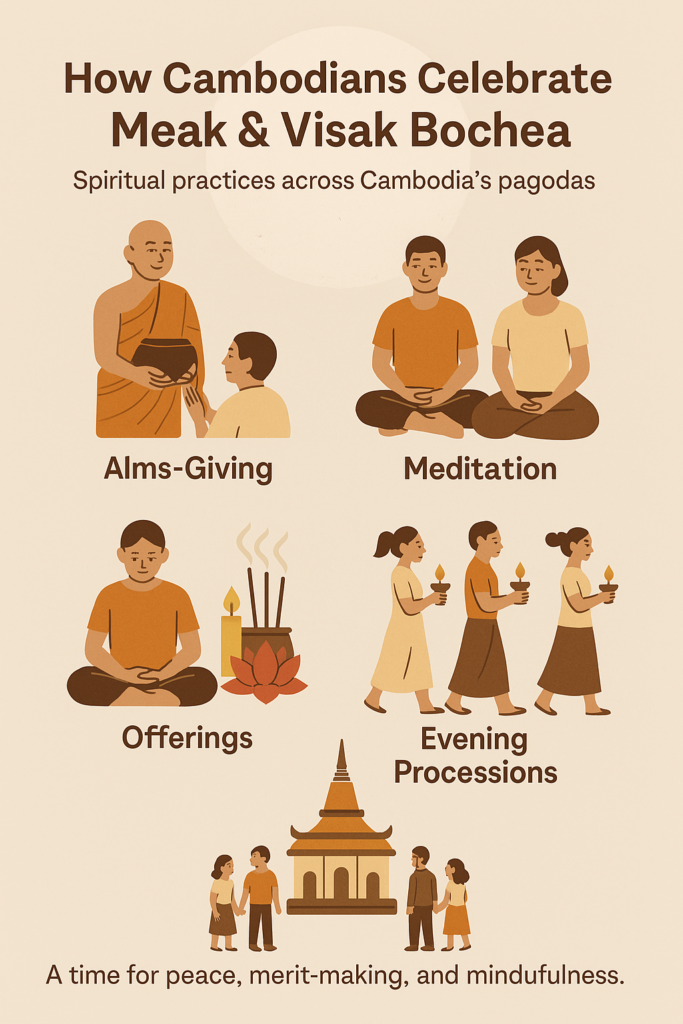
Across Cambodia, both holidays are observed with:
- Morning alms-giving to monks,
- Listening to Dharma talks,
- Participating in meditation retreats,
- Making offerings of flowers, candles, and incense.
Schools often suspend classes, and government officials participate in temple ceremonies. Temples become spiritual hubs where entire communities gather in reverence.
4. The Significance of Candlelight Processions

One of the most striking features of both holidays is the candlelight procession around the temple’s main stupa. Devotees walk in silence three times, holding flowers, incense, and candles.
- Three Circles Represent:
- The Buddha (The Enlightened One),
- The Dharma (His Teachings),
- The Sangha (The Monastic Community).
This ritual symbolizes spiritual illumination and the cyclical journey of life, death, and rebirth.
5. Practicing the Dharma During the Festivals
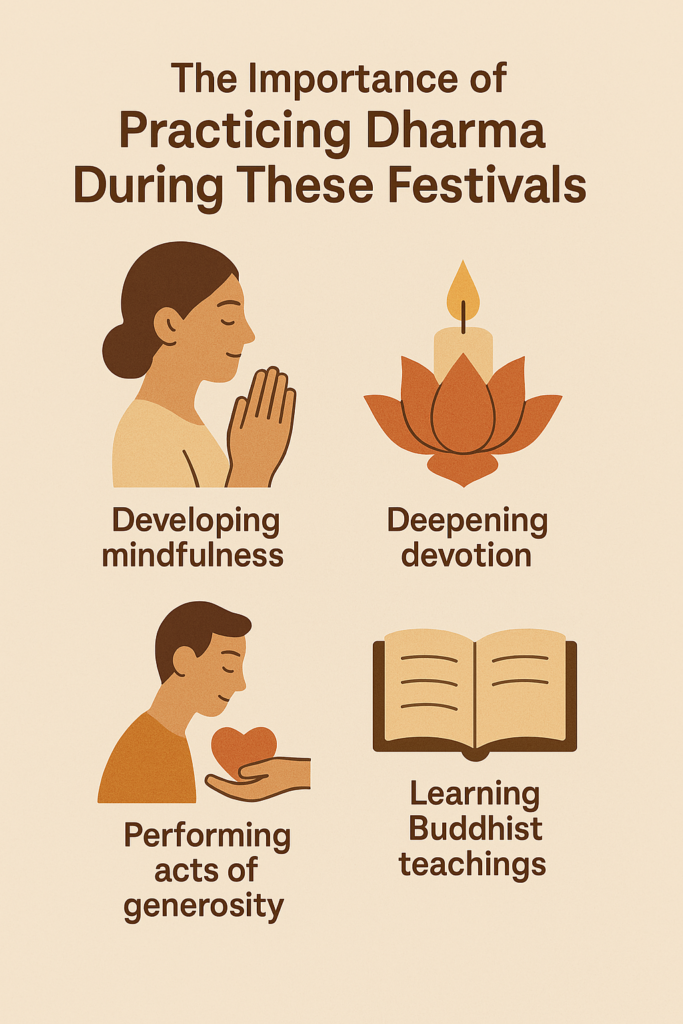
While the festivals include ritual, they are not merely ceremonial. Cambodians use this time to deeply engage in practicing the Dharma, which includes:
- Observing the Five Precepts more strictly,
- Engaging in acts of generosity,
- Cultivating mindfulness and compassion,
- Reflecting on life’s impermanence.
Families may also dedicate merit to deceased relatives, integrating spiritual goals with cultural obligations.
6. Meak & Visak vs. Pchum Ben: Different Paths of Reflection
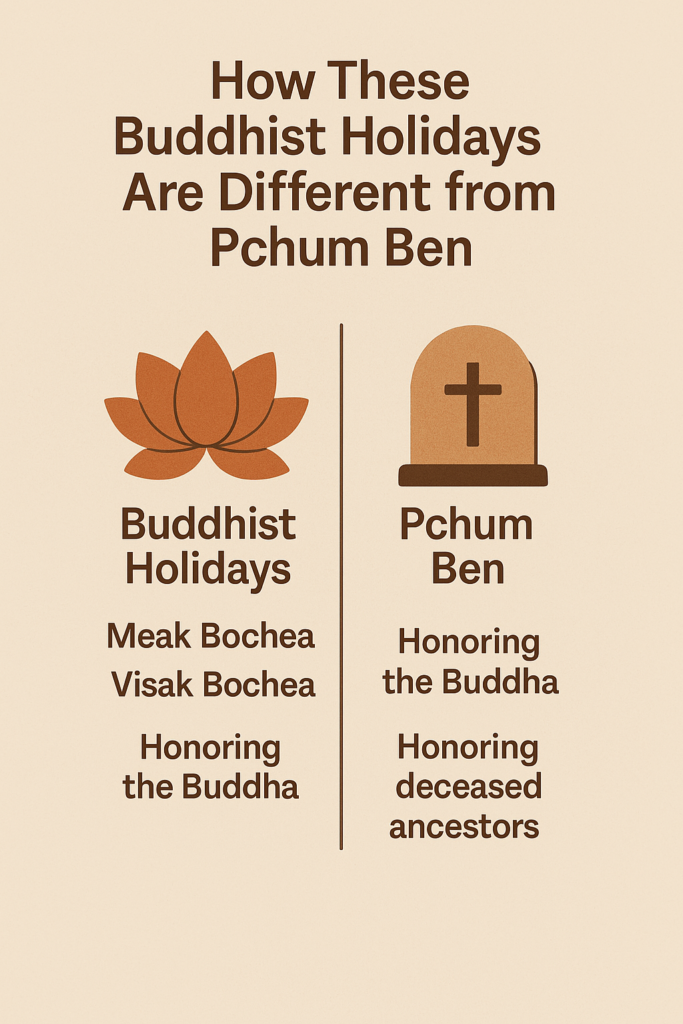
Though all three are Buddhist holidays, Meak Bochea and Visak Bochea focus on the Buddha’s life and teachings, while Pchum Ben centers on honoring the spirits of ancestors.
| Holiday | Focus | Rituals | Time of Year |
|---|---|---|---|
| Meak Bochea | Buddha’s last sermon | Chanting, candlelight procession | February |
| Visak Bochea | Birth-Enlightenment-Death | Meditation, offerings | April/May |
| Pchum Ben | Ancestral spirits | Food offerings, nighttime rituals | September/October |
Conclusion
Meak Bochea and Visak Bochea are not just days of ritual but living expressions of faith, urging Cambodians to renew their spiritual practice, embrace compassion, and walk the path of the Dharma. In these holy days, the light of candles mirrors the light of wisdom, guiding individuals and communities alike toward inner peace and enlightenment.


